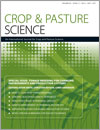Forage species provide the major feed-base for livestock grazing industries supporting production of dairy products, red meat and animal fibres. Because of the complex, multifactorial and highly environmentally sensitive nature of many key breeders’ traits for forage crops, implementation of genomic selection (GS) is a particularly attractive option. Although basic strategies for GS implementation have been devised, forage species display a broad range of biological factors that may influence the precise design of GS-based programs. These factors are described and exemplified by reference to several temperate and warm-season grass and legume species. Current knowledge with respect to such factors, along with the availability of suitable genomic resources and prospects for future activities, is described for several representative species (white clover, tall fescue and phalaris). Generic issues and benefits associated with GS implementation in forage breeding are also assessed.
How to translate text using browser tools
9 September 2014
Resources and strategies for implementation of genomic selection in breeding of forage species
J. W. Forster,
M. L. Hand,
N. O. I. Cogan,
B. J. Hayes,
German C. Spangenberg,
K. F. Smith
ACCESS THE FULL ARTICLE
<
Previous Article
|

Crop and Pasture Science
Vol. 65 • No. 11
Oct 2014
Vol. 65 • No. 11
Oct 2014
grass
legume
polyploidy
self-incompatibility
single nucleotide polymorphism
symbiont




